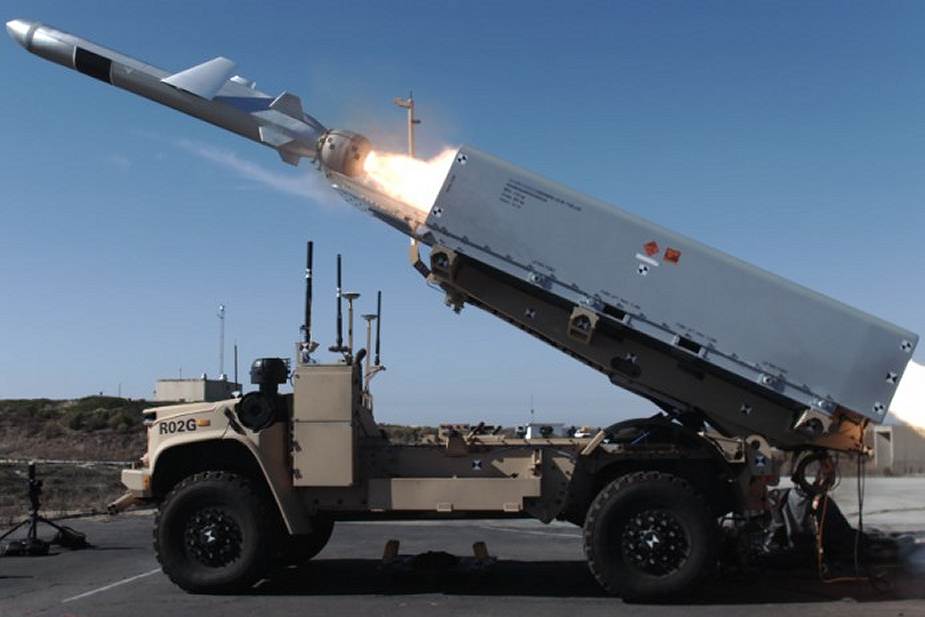Raytheon and US Navy have successfully demonstrated NMESIS anti-ship missile system
According to information released by the American Company Raytheon, Raytheon Missiles & Defense, a Raytheon Technologies business, and the U.S. Marine Corps successfully demonstrated the Navy Marine Expeditionary Ship Interdiction System, or NMESIS, off the California coast.
Follow Army Recognition on Google News at this link

The Navy Marine Expeditionary Ship Interdiction System, or NMESIS, was successfully demonstrated using the NSM Naval Strike Missile launched from a container mounted on Oshkosh Defense Remotely Operated Ground Unit for Expeditionary (ROGUE) Fires vehicle. (Picture source U.S. Navy Raytheon)
The inaugural test proved the system’s ability to fire a Naval Strike Missile, or NSM, from a U.S. Marine Corps ground launcher and score a direct hit against a surface target at sea. The NSM is a multi-mission cruise missile designed to destroy heavily defended maritime and land targets; it is the U.S. Navy’s over-the-horizon weapon system for littoral combat ships and future frigates.
The Naval Strike Missile was originally developed by the Norwegian company Kongsberg as a replacement for the Penguin anti-ship missile. This missile is an anti-ship, low-observable cruise missile capable of flying close to the surface of the ocean to avoid radar detection. The missile has an effective range between 100 (185 km) to 300 nautical miles (555 km). The U.S. Navy has integrated the NSM on its Littoral Combat Ship, which deployed into the Pacific region in September 2019.
The U.S. Marines will use NMESIS to support the U.S. Navy from the shore against enemy ships. NMESIS is comprised of the Raytheon Missiles & Defense-made NSM and a Remotely Operated Ground Unit for Expeditionary (ROGUE) Fires vehicle, produced by Oshkosh Defense. In May 2020, Army Recognition has released news May 2020 to announce the U.S. Marines's plan to integrate the Naval Strike Missile (NSM) on unmanned JLTV ROGUE Fires vehicle to enhance its anti-ship capability in support of sea control and sea denial missions.
The NMESIS will offer a new mobile coastal missile defense system for the U.S. Marines and is is the Marine Corps’ highest ground modernization priority.
According to the Department of the Navy’s 2021 budget book, the U.S. Marine Corps would like to use the existing armored vehicle JLTV and existing anti-ship missiles solution to create the Ground-based Anti-ship Missile and Remotely Operated Ground Unit Expeditionary (ROGUE) Fires vehicle.
The Navy/Marine Expeditionary Ship Interdiction System (NMESIS) will procure long-term and short-term solutions for an Anti-Ship Missile (ASM) capability in support of the Marine Corps Expeditionary Advanced Base Operations (EABO) and the National Defense Strategy approach to build a more lethal Joint Force. The NMESIS project will procure a USMC (United States Marine Corps) system while leveraging other Service-developed missiles to provide a ground-based anti-access/area denial, anti-ship capability.
NSM is the latest product from a partnership Raytheon Missiles & Defense has with Norway and its defense leader Kongsberg Defence & Aerospace. The companies have teamed to bring more than half of NSM production to the U.S. The missile is already in service with Norway’s navy and Poland’s coastal defense squadrons.




























